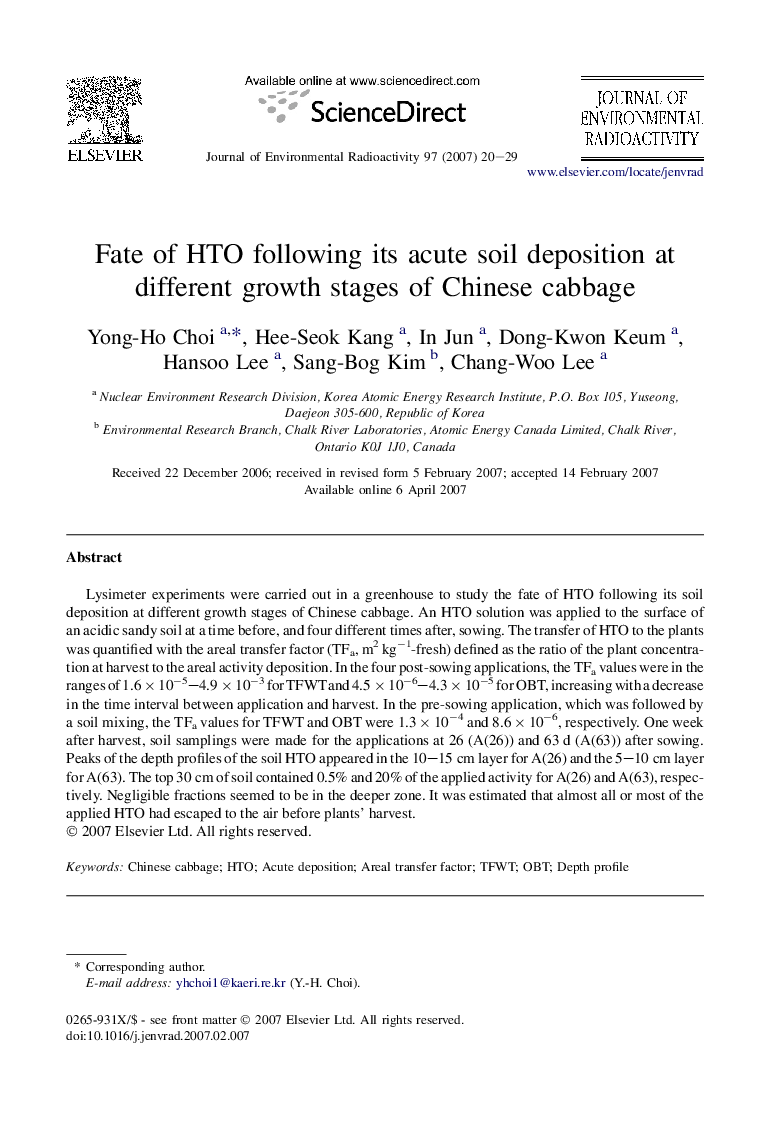| Article ID | Journal | Published Year | Pages | File Type |
|---|---|---|---|---|
| 1739441 | Journal of Environmental Radioactivity | 2007 | 10 Pages |
Lysimeter experiments were carried out in a greenhouse to study the fate of HTO following its soil deposition at different growth stages of Chinese cabbage. An HTO solution was applied to the surface of an acidic sandy soil at a time before, and four different times after, sowing. The transfer of HTO to the plants was quantified with the areal transfer factor (TFa, m2 kg−1-fresh) defined as the ratio of the plant concentration at harvest to the areal activity deposition. In the four post-sowing applications, the TFa values were in the ranges of 1.6 × 10−5–4.9 × 10−3 for TFWT and 4.5 × 10−6–4.3 × 10−5 for OBT, increasing with a decrease in the time interval between application and harvest. In the pre-sowing application, which was followed by a soil mixing, the TFa values for TFWT and OBT were 1.3 × 10−4 and 8.6 × 10−6, respectively. One week after harvest, soil samplings were made for the applications at 26 (A(26)) and 63 d (A(63)) after sowing. Peaks of the depth profiles of the soil HTO appeared in the 10–15 cm layer for A(26) and the 5–10 cm layer for A(63). The top 30 cm of soil contained 0.5% and 20% of the applied activity for A(26) and A(63), respectively. Negligible fractions seemed to be in the deeper zone. It was estimated that almost all or most of the applied HTO had escaped to the air before plants' harvest.
